Purshia stansburiana, Cliffrose
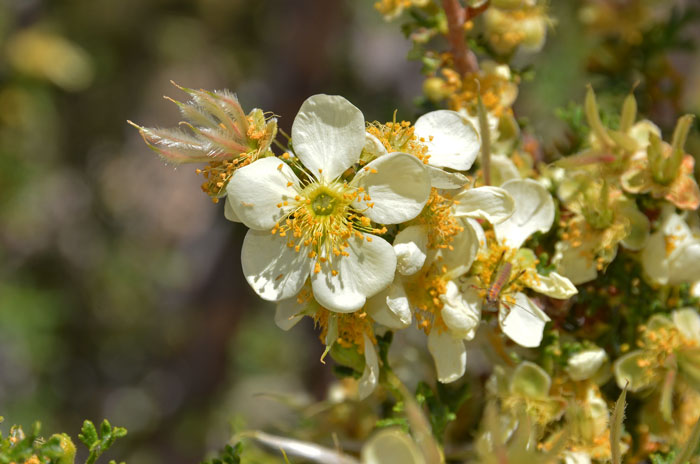
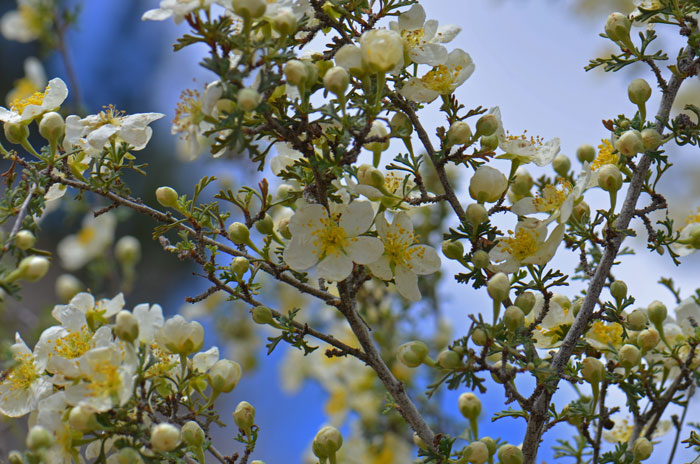
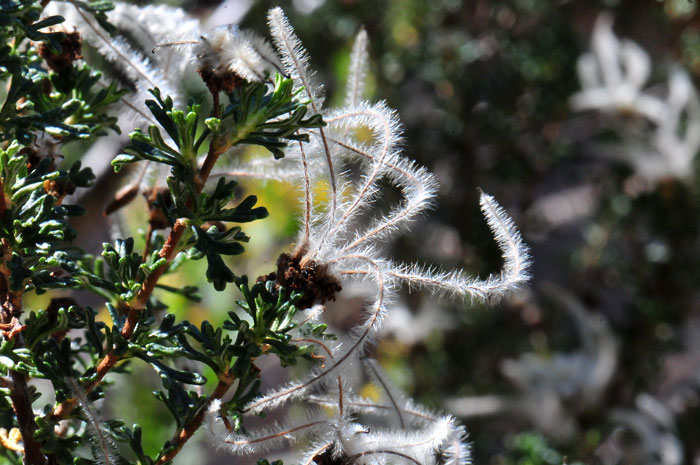
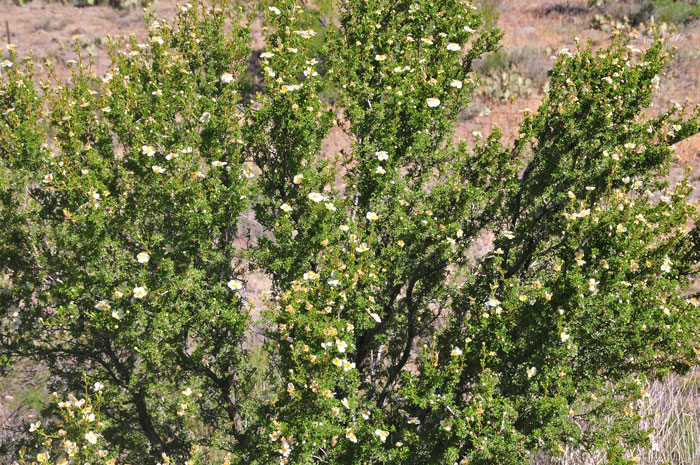

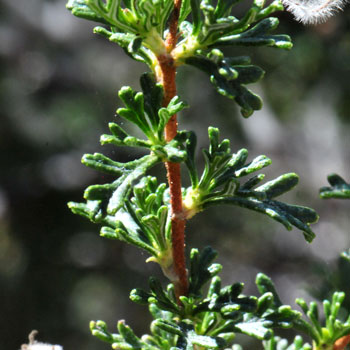
Scientific Name: Purshia stansburiana
Common Name: Cliffrose
Also Called: Quinine-bush, Stansbury Cliffrose, Stansbury's Cliffrose (Spanish: Romerillo Cimarrón)
Family: Rosaceae or Rose Family
Synonyms: (Cowania alba Goodding, Cowania mexicana var. stansburiana, Cowania stansburiana, Purshia mexicana var. stansburiana, Purshia mexicana var. stansburyana, Purshia stansburiana)
Status: Native
Duration: Perennial
Size: Usually about 6 feet to 10 feet or more, but may grow as high as 25 feet under ideal conditions.
Growth Form: Shrub, tree; drought-resistant and hardy; bark is grayish or reddish, both twigs and bark peel and are shreddy; twigs are glandular.
Leaves: Green above; (adaxial) and lower surface (abaxial) light green with short white hairs (tomentose); leathery; pinnately compound; leaves are glandular;
Flower Color: White, creamy-white; showy flowers with both sepals and petals; multiple stamens; flowers typically bisexual; fragrant; fruit a feathery plumose achene with a persistent style.
Flowering Season: April to September; April to May (Oct) in California and April to July in Texas.
Elevation: 3,000 to 8,000 feet in Arizona and Texas; 2,000 to 7,500 feet in California.
Habitat Preferences: Common along cliffs (Cliffrose), in dry slopes, mesas and foothills, especially in pinyon-juniper communities, often in limestone.
Recorded Range: Purshia stansburiana is found mostly in the southwestern United States in AZ, CA, CO, ID, NM, NV, UT. In Arizona it is found throughout most of the state in preferred habitats, few or no records in the central and southwest parts of the state. This species is also native to northern Mexico.
North America & US County Distribution Map for Purshia stansburiana.
U.S. Weed Information: No information available.
Invasive/Noxious Weed Information: No information available.
Wetland Indicator: No information available.
Threatened/Endangered Information: No information available.
Genus Information: In North America there are 7 species and 7 accepted taxa overall for Purshia stansburiana. World wide, The Plant List includes 8 accepted species names with 4 infraspecific rank for the genus.
In Arizona there are 5 species of Purshia stansburiana, California, Nevada and Utah each have 3 species, New Mexico has 2 species and Texas has 1 species. All data is approximate and subject to taxonomic changes.
Comments: Purshia stansburiana and other members of the Rosaceae family in the southwest are important food sources for deer, elk, pronghorn, desert bighorn sheep and livestock, especially in winter months. Small mammals and ground dwelling birds feed on the seeds of this species. Cliffrose is an important species for controlling erosion.
Purshia stansburiana hybridizes with Purshia tridentata var. glandulosa and Purshia tridentata var. tridentata.
Purshia stansburiana looks similar to Apache Plume, Fallugia paradoxa.
Purshia stansburiana has been used for a variety of purposes by North American indigenous peoples.
Hopi Drug, Dermatological Aid, Plant used in a wash for wounds.
Hopi Fiber, Clothing, Bark spun and woven into kilts worn by the snake priests.
Keres, Western Other, Hunting & Fishing Item, Plant sometimes used for arrow shafts.
Navajo Dye, Yellow-Brown, Pounded leaves and stems mixed with pounded juniper and used to make a yellow brown dye.
Navajo, Ramah Fiber, Mats, Rugs & Bedding, Shredded bark used for bedding or stuffed into a sack for pillows. See other ethno-botanical uses at Native American Ethnobotany, University of Michigan, Dearborn.

